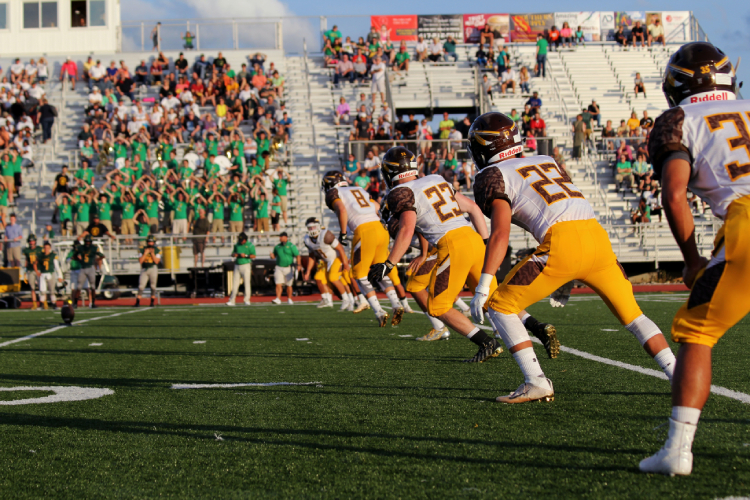
Although some sports at the high school level are able to play, it will be a while before competition returns to its old ways of large crowds and fewer safety restrictions. photo by Riley McCullough
Sports are trying to return to competitions as society struggles to regain a sense of normalcy during a time of turmoil.
Sports seasons everywhere, whether professional, collegiate, high school, or recreational, are being canceled. Some sports, such as golf, track and field, and cross country are able to continue on relatively normally, as they are low-risk. Other sports like football, basketball, and wrestling are not as safe to engage in during a pandemic; therefore, many of their seasons have been cancelled. Athletes who are lucky enough to have a season to compete in are seeing many changes in their sport to accommodate health regulations.
Many sports schedules have been switched and shortened to help decrease COVID-19 cases while also keeping sports going. As a volleyball player, I had my high school season moved to March, which is the height of competition for my club volleyball team. As of now, I do not know if I will be able to participate in high school volleyball because I have already committed to my club team. Usually, practices for club volleyball start in late November after the high school volleyball season ends, but this year club teams started practicing in early September. At my club, 303 Volleyball Academy, we are required to wash our hands upon entering, followed by logging our blood oxygen level and temperature. Masks are required in the facility at all times. Personally, I feel safe while playing volleyball because of all of the precautions being taken by my club and the overall region. The worst part of playing a sport during COVID-19 is wearing a mask. While I wouldn’t participate in athletics right now without a mask, it restricts my breathing and at times I feel like I might pass out. On a less serious note, wearing a mask while sweating heavily has contributed to my acne. Although all the restrictions and new rules are irritating at times, I am very grateful that I am still able to play volleyball during this time.
Anabelle Garcia, a cheerleader from the junior class at Thomas Jefferson High School, reflected on how her sport has changed since the coronavirus. Many athletes have experienced difficulty breathing through their masks while active in the past months. Garcia has experienced similar struggles, saying, “Wearing a mask during practice makes it harder to breathe and makes it harder to monitor your breathing during cardio.” While wearing masks during physical activity can be a pain, it isn’t the biggest change that cheerleading has experienced. According to Garcia, “Practices are shorter and we cannot practice stunting which is harmful to the team, considering our team hasn’t competed together yet and our first competition is in January.” Cheering can be a very dangerous sport, especially when proper preparation hasn’t taken place. In the competition in January, many teams are still planning on stunting, despite their lack of practice this season. Although many aspects of cheering have changed to accommodate safety regulations, the cheer team at Thomas Jefferson is still practicing their usual cheer routines for when sports return.
Matt McPherson, a sophomore at Thomas Jefferson High School, has also seen his sport go through significant changes. As a goalkeeper on a highly competitive soccer team, McPherson regularly participates in high intensity training, which is made difficult while wearing a mask. “The best word I can use for wearing a mask during high intensity training is restriction. You have to try and suck in air through the mask, which can be difficult, but that is only during high intensity, otherwise during low and medium intensity sessions, mask wearing isn’t much of an inconvenience.” As far as competitions go, McPherson’s team was able to compete for a short amount of time against other teams in Colorado, but now that COVID-19 cases have gone up, competition has been suspended until further notice. Like other athletes, McPherson has seen a lot of changes in his sport. “COVID has changed our sport in the fact that you cannot cross contaminate between teams which means not being able to train with your friends sometimes, and overall COVID has restricted the amount that a team can improve.” Being a high risk sport, soccer will likely not return to competition and normal practice until COVID-19 cases start moving in a downward trend. Unfortunately, with cases moving in an upwards trend, there is a good chance that in the weeks to come, many high school athletes will lose yet another part of their normal lives.